You are here
Capitol Peak stands tall at 14,131 feet in elevation, and the standard route up is deemed the most challenging standard route up a Colorado 14er. The route up Capitol Peak has extensive scrambling and exposure to heights, and it is capped off with the famous "Knife Ridge." The Knife Ridge is a short and very exposed section of scrambling across a thin ridge with serious exposure on either side. Because of features like this, Capitol Peak has claimed at least seven lives, with a total of five hikers in 2017 alone. This is a peak to take very seriously. Because of the challenge and the sheer beauty and size of the peak, Capitol Peak is a sought-after peak for peakbaggers all over the United States. Capitol Peak sits in the heart of the Elk Mountains, just outside of Aspen, Carbondale, and Glenwood Springs, Colorado.
To hike Capitol Peak, start at the Capitol Creek Trailhead, which is about 9 miles up a steep dirt road. Views from the trailhead are breathtaking. Hiking Colorado 14ers is a popular objective, and solitude can be hard to find on these mountains, especially during weekends. One benefit of the crowds, however, is extensive information about the route. You can find an abundance of information about the route up Capitol, including step by step directions and photographs, here. Definitely consult this resource.
If you'll be doing this hike as an overnight, which is recommended, all campsites in the area are close to Capitol Lake, yet not on the shores. Campsites in the area are numbered 1-8, and if possible it is suggested that you camp in these areas because they have already been impacted by previous campers. If all the campsites are full, it is okay to camp anywhere nearby, ideally in a spot that looks like it has previously been camped on.
From camp, the initial hike up to Capitol is obvious. Follow the well-defined trail that switchbacks all the way up to the saddle between Capitol and Daly. This is roughly 900 feet of elevation gain. From this point, the rock hopping begins. Consult your information and follow the hiker's trail around the backside of Capitol. This part of the hike will take a while, and it consists of hiking up big granite boulders. There will be several cairned routes up this section. Follow the cairns and your best judgement up this section, all the way to the ridgeline just below K2. K2 is a subpeak on the ridge to Capitol Peak. Once you reach the ridgeline near its summit, the real fun begins. From this point on, there is extensive scrambling with a decent amount of exposure. Scramble up and over K2, and descend just a bit to the ridgeline to Capitol. From this point, there are some minor moves to make before having to cross the Knife Ridge. The Knife Ridge is about a 40-foot section of extremely small ridgeline that must be traversed. The rock is very solid with abundant hand and footholds; however, a fall here could be catastrophic, so pay attention and take your time.
Once past the knife ridge, there is still a lot of scrambling to go. There are a lot of potential routes to the summit, but it is best to stay as close as you can to the true ridgeline. The ridgeline has a lot of exposure, but it also has a lot of solid rock and easy moves. The more you deviate from the ridgeline, the looser the dirt and rocks get.
Once you are on the summit, take in the absolutely otherworldly views. A lot of 14ers are visible from the summit, including Snowmass Mountain along the connecting ridge. To the south you can even see the San Juan Mountains, meaning that from this vantage point you can see almost all of Colorado’s major mountain ranges. To return to camp, simply retrace your steps. This means going across the knife ridge yet again.
The weather on Colorado 14ers can be one of the biggest obstacles to summiting. The ridgeline to Capitol Peak would be one of the worst places on earth to get caught in a thunderstorm, so please be very careful. This peak is not to be attempted by someone who is afraid of heights or for those who are not prepared to be scrambling with exposure above 13,000 feet for several hours.


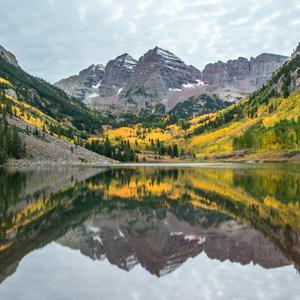

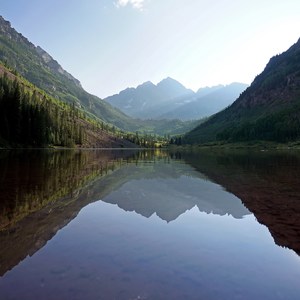
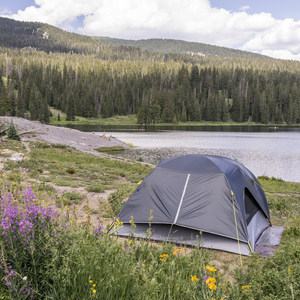
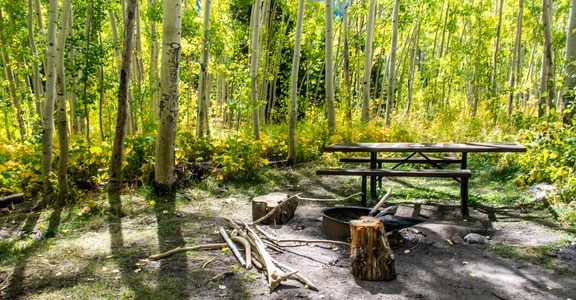
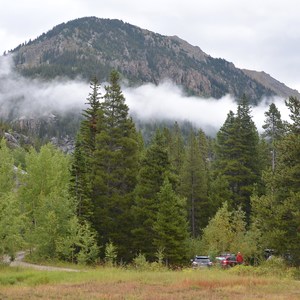



Comments
Sign In and share them.